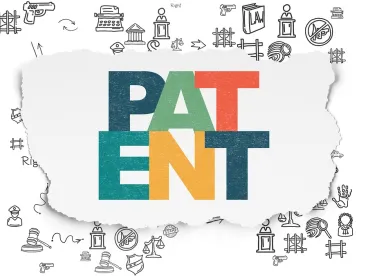The judicially-created doctrine of obviousness-type double patenting is one of the most vexing doctrines of U.S. patent law. In Immunex Corp. v Sandoz Inc., the Federal Circuit added another layer of complexity to the doctrine, deciding a licensed patent can be treated as a “commonly owned” patent for purposes of obviousness-type double patenting if the licensee controlled prosecution and received “all substantial rights” in the patent. Having weighed in on this issue of law, the majority decided that obviousness-type double patenting did not arise in the case before it because the exclusive licensee had not received all substantial rights. Nevertheless, this decision underscores the care that should be taken when drafting patent agreements and may add another item to due diligence checklists.
Obviousness-Type Double Patenting
As explained in Eli Lilly and Co. v. Barr Labs., Inc. (Fed. Cir. 2001), obviousness-type double patenting is a judicially-created doctrine designed to “prohibit a party from obtaining an extension of the right to exclude through claims in a later patent that are not patentably distinct from claims in a commonly owned earlier patent.” As noted in the Immunexdecision, “there are two justifications for this doctrine: (1) to prevent timewise extension of the right to exclude; and (2) to prevent multiple infringement suits by different assignees.”
While the doctrine previously has been applied to patents with overlapping owners and/or overlapping inventors, Sandoz raised what the court referred to as “a novel theory of common ownership” for exclusively licensed patents. Specifically, Sandoz argued the “all substantial rights” test developed under 35 U.S.C. § 281 should be used to assess whether two patents are “commonly owned” for purposes of obviousness-type double patenting.
This presented the Federal Circuit with two questions: can a licensed patent give rise to obviousness-type double patenting, and if so, when?
The “All Substantial Rights” Test
The Federal Circuit decision was authored by Judge O’Malley, and joined by Judge Chen. Judge Reyna authored a dissenting opinion agreeing with the majority on the legal issues, but disagreeing on the outcome.
The majority agreed adopting Sandoz’s “novel theory of common ownership” would serve the goals of the doctrine. That is, the court agreed applying the doctrine of obviousness-type double patenting to an exclusively licensed patent “would prevent an effective patentee from unjustifiably extending its patent term by using the nominal label of licensee,” and also could “prevent[] harassment through multiple infringement suits by different assignees asserting essentially the same patented invention.” The majority stopped short of importing § 281 jurisprudence into the doctrine of obviousness-type double patenting, and held:
We conclude only that where one of the rights transferred is the right to prosecute the patent at issue, identification of the effective “patentee” is informative in evaluating whether the patents are “commonly owned” for purposes of obviousness-type double patenting. Where, as here, a party ultimately controls prosecution of both sets of patents, the “all substantial rights” test aids in preventing the unjustifiable issuance of claims that are patentably indistinct from claims already owned by that party.
The majority explained further:
Under these circumstances, looking to the “all substantial rights” test achieves the proper balance between deterring gamesmanship in prosecution, on the one hand, and avoiding any chilling effect on routine collaborations and licensing between parties working in the same field of research, on the other.
The Agreement At Issue
The agreement at issue pertained to patents licensed from Roche relating to Immunex’s biologic rheumatoid arthritis drug Enbrel®. As summarized in the majority opinion, the agreement conveyed “a paid-up, irrevocable, exclusive license to the U.S. patent family,” “the sole right to grant sublicenses,” and “the exclusive right to prosecute patent applications in the U.S. patent family.” The majority’s reasoning evaluating whether the agreement conveyed all substantial rights centered on two of Roche’s retained rights: (1) a secondary right to sue for infringement, and (2) a right to veto the assignment of Immunex’s interests to any unrelated party:
The enforcement and alienation rights under the Accord & Satisfaction make clear that Roche did not transfer all substantial rights in the patents to Immunex.
Thus, the majority found the agreement had not transferred all substantial rights to Immunex, such that obviousness-type double patenting could not arise between the licensed patents and other patents owned by Immunex.
Judge Reyna’s Dissent
As noted above, Judge Reyna agreed with the majority’s determination that an exclusively licensed patent can give rise to obviousness-type double patenting, but disagreed with the majority’s determination that the agreement at issue did not make Immunex an effective owner of the patent at issue. In particular, Judge Reyna found Roche’s retained rights to be “illusory”:
Immunex can at any time nullify Roche’s rights by ordering Roche to assign the patents-in-suit to Immunex upon payment of $50,000. …. Thus, if Immunex disagrees with Roche’s decision to initiate suit or Roche’s decision to veto an assignment, Immunex can undo Roche’s decisions by simply obtaining official ownership of the patents-in-suit.
Be Careful What You Wish For
This decision highlights the care that should be taken when drafting patent agreements, and the potential unintended consequences of drafting a license that has the effect of an assignment. Due diligence checklists often focus on the validity and commercial value of the patent families on the table, but in view of this decision licensees also may want to consider whether they could raise obviousness-type double patenting issues for their existing portfolio.
Will Olson, Summer Associate, also contributed to the creation of this article.




 />i
/>i

